A technical cooperation project in Zambia has developed an effective rapid diagnostic kit for preventing the spread of Ebola. We trace its development with one of the foremost authorities on the virus.
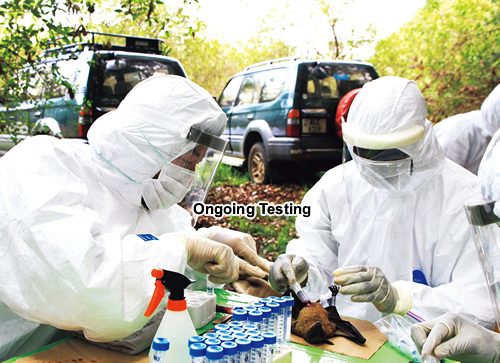
More than 1,000 bats have been surveyed in Zambia so far.
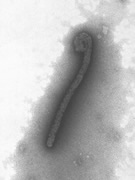
Ebola virus
Therapeutic drugs are still under development.
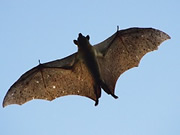
Bats are believed to be carriers of various zoonoses.
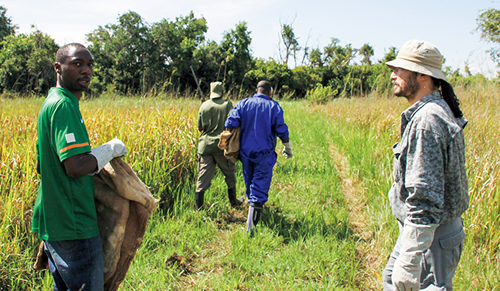
Fieldwork conducted with researchers from the University of Zambia.
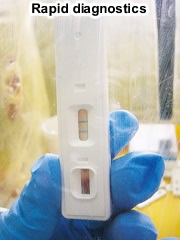
The QuickNavi™ series of rapid diagnostic kits developed for Ebola are compact and easy to use.
The Ebola Virus and the Captured Bats
At the time of the 2014 Ebola outbreak in West Africa, Professor Ayato Takada of the Hokkaido University Research Center for Zoonosis Control was working with the University of Zambia School of Veterinary Medicine (UNZA-SVM) to develop and improve diagnostic techniques as part of a Science and Technology Research Partnership for Sustainable Development* (SATREPS) project to create a rapid diagnostic kit for Ebola. "The outbreak in West Africa could have been contained if we had a rapid diagnostic kit for Ebola at that time," he reflects.
Prof. Takada has been surveying bats in the forests of Zambia since late 2006. This has involved conducting ecological surveys of factors such as the distribution of viruses and their routes of transmission in nature and evaluating the risk of infection to humans in order to minimize the spread of such infections. Once caught, the bats are anaesthetized, and their blood is sampled on the spot. Fruit bats in particular are suspected of being natural hosts for the Ebola virus, and are considered to be an important species for clarifying how, and to what extent, viruses can spread. An investigation is also being carried out to determine whether or not the Zambian fruit bat carries the Ebola virus and the Marburg virus, which can also cause hemorrhagic fever.
Development of Handy Diagnostic Kits
Prof. Takada has been involved in developing a diagnostic kit for the influenza virus jointly with Denka Seiken Co. Ltd., a Japanese company that manufactures and sells medical testing equipment. Armed with the research materials and experiences he gained through the SATREPS, and using that kit as a basis, he worked with Denka Seiken to adapt the kit for use with Ebola. In March 2015, they successfully developed prototypes of what was to become the QuickNavi™ series of Ebola rapid diagnostic kits.
How effectively infectious diseases can be controlled depends on how quickly people who are suspected of being infected can be identified. "Although diagnostic methods such as genetic analysis are highly sensitive, treatment is typically delayed because it takes several hours to get a result, meaning that the limited supplies of medicine do not get to the people who really need it. Furthermore, there is often a lack of infrastructure in places where outbreaks occur. Diagnosis can be delayed, and diseases can further spread in small villages with unreliable power supplies if test methods require that diagnostic reagents be kept refrigerated or frozen, and if the testing equipment itself requires electricity to function. Therefore, we needed easy-to-use rapid diagnostic kits that could be kept at room temperature."
Two years after the rapid diagnostic kits were developed, the neighboring Democratic Republic of the Congo (DR Congo) reported Ebola outbreaks in 2017 and 2018. A JICA expert soon consulted Prof. Takada, who helped to arrange the donation of more than 3,000 Denka Seiken rapid diagnostic kits to help control the outbreak.
"Early detection, early containment." Rapid diagnosis of infection can save many lives. While continuing his work in Zambia, Prof. Takeda will launch a new project in 2019 that aims to identify the natural hosts and the routes of transmission involved in the many outbreaks of Ebola that occur in DR Congo. He also continues to work with Denka Seiken to develop rapid diagnostic kits for viral hemorrhagic fevers other than Ebola.
*Technical cooperation provided through joint research for solving global issues, conducted in conjunction with researchers in developing countries by the Japan Science and Technology Agency (JST), the Japan Agency for Medical Research and Development (AMED), and JICA
Professor Ayato Takada Research Center for Zoonosis Control, Hokkaido University
Virologist. Researches zoonoses, such as influenza and Ebola. One of the foremost researchers contributing to the understanding of the Ebola infection mechanism and methods of controlling, diagnosing, and treating the disease. Awarded the Japan Society for Virology's Sugiura Incentive Award in 2005 for his work in elucidating the function of the Ebola virus surface glycoprotein.
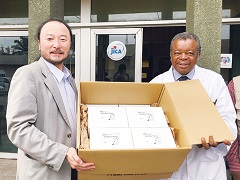
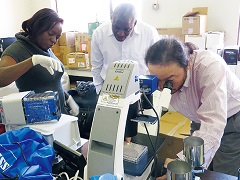
Hokkaido University and the University of Zambia
School of Veterinary Medicine (UNZA-SVM) have
carried out joint research for many years.
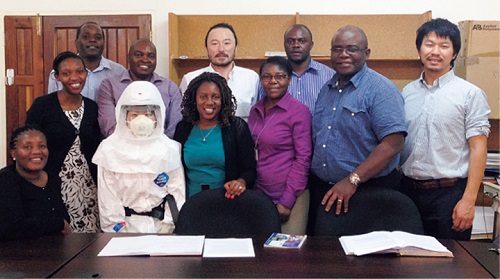
With the collaborative research project members




scroll